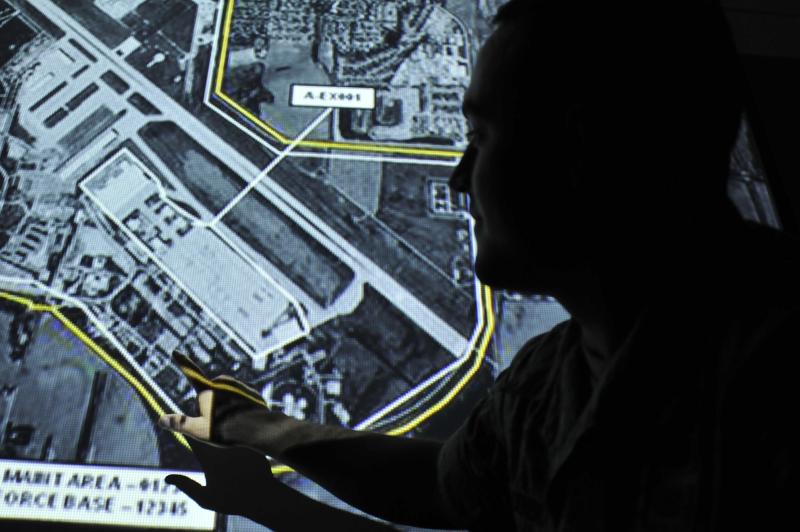Operationalizing AI: Addressing Threat Scenarios with Parsons
In this article, we delve into the world of AI with Ricardo "Rico" Lorenzo, the chief technology officer for Parsons. Learn how Parsons is leveraging AI to address various threat scenarios, such as GPS spoofing and cyber-attacks, and how they are seamlessly integrating AI into existing infrastructure to enhance mission efficiency and bridge capability gaps.
Addressing Threat Scenarios
Discover how Parsons is tackling a range of threat scenarios with the power of AI.
Parsons is at the forefront of addressing a wide array of threat scenarios using AI. From GPS spoofing and electronic attacks to cyber-attacks and biological threats, the company is leveraging AI to provide effective solutions.
By focusing on scenarios with a high "AI-readiness" level, Parsons is able to apply AI to current mission needs. With their deep understanding of their customers' missions, systems, and data, they are able to quickly develop and implement AI-enabled decision support systems.
Through their work with the Space and Army customers, Parsons is actively involved in predicting friendly and enemy courses of action by analyzing intelligence data. This empowers decision-makers with high-confidence courses of action to effectively deploy assets based on the enemy's likely next move.
Challenges in Implementing AI/ML
Explore the obstacles faced by the Department of Defense in implementing AI and machine learning.
While AI has gained significant attention, operationalizing this emerging technology remains a major challenge for the Department of Defense (DoD). The DoD has invested billions of dollars in legacy systems and infrastructure, making it crucial to integrate AI without disrupting existing systems.
Parsons defines "operational AI" as AI capabilities that function within real-world hardware and communication constrained environments, interact with legacy software systems, and operate on disparate and sometimes unreliable sensor feeds while maintaining reliability.
Understanding where and how AI will be deployed and used is key to successful implementation. Parsons focuses on integrating AI within existing infrastructure, such as the Joint All-Domain Command and Control (JADC2) roadmap, to create JADC2-like capabilities. By partnering with the S&T and acquisition community, they are developing AI-enabled EW planning optimization capabilities to enhance mission efficiency.
Parsons' History with AI Development
Learn about Parsons' long-standing involvement in AI development and implementation in the defense sector.
Parsons has been supporting the DoD with the development of AI capabilities since the early 2000s. As a trusted solutions provider, they have been implementing techniques for predictive awareness in partnership with the Services R&D community.
Their holistic and agile approach to AI involves adapting emerging technology to the mission and the current environment. By partnering with industry and government customers, Parsons quickly integrates AI investments into operational infrastructure to improve mission efficiency and address capability gaps.
Through their PALADIN labs, Parsons provides a low-risk environment for research, development, and testing of AI capabilities. This enables the government to determine which commercial AI capabilities are worth pursuing and ensures responsible and effective AI implementations.
Managing AI Implementation Risks
Explore the importance of managing risks associated with AI implementation and the frameworks available to ensure responsible deployment.
While AI implementation brings exciting possibilities, it is crucial to be aware of the associated risks and have a framework in place to manage them. Organizations like the International Committee for Information Technology Standards (INCITS) and NIST are collaborating with the private and public sectors to develop standards and tools, such as the AI Risk Management Framework, to effectively manage risk.
Parsons recognizes the importance of actively participating in these forums and leveraging tools and frameworks to ensure responsible and proactive AI implementations. They are committed to exploring ways to bring this transformative technology to the mission in a responsible and effective manner.
Join Parsons in the ongoing AI discussion and together, let's harness the power of AI to drive innovation and meet real-world mission needs.
Conclusion
Parsons is at the forefront of leveraging AI to address a wide range of threat scenarios. With their deep understanding of mission needs, legacy systems, and data, they have successfully integrated AI into existing infrastructure to enhance mission efficiency and bridge capability gaps.
By operationalizing AI and collaborating with industry and government partners, Parsons is driving innovation and ensuring responsible and effective AI implementations. They are actively involved in managing the risks associated with AI deployment and are committed to staying at the forefront of AI development in the defense sector.
Join Parsons in embracing the transformative power of AI and together, let's shape a future where AI enables us to tackle complex challenges and achieve mission success.

